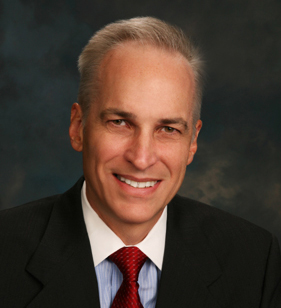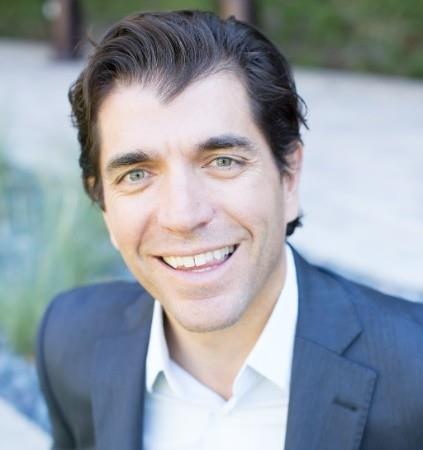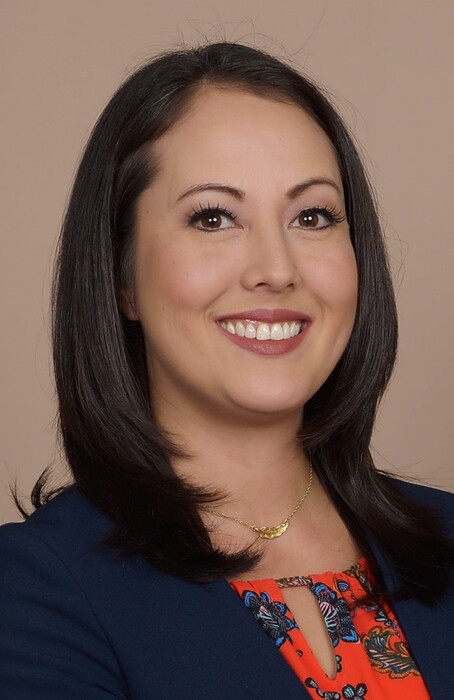It may seem counter-intuitive, but going to a good doctor costs less overall than going to a bad one. 30% of healthcare costs are due to poor or ineffective care and good doctors wring out those excess costs.
But how do we find the best doctors?
Quality. The problem in healthcare is that we don’t know how to measure quality. As a proxy for quality we fall back on process measures that change the question we should be asking: “Did the patient get better?”
To a question with an easy answer: “What procedures did their doctor perform?”
Another fallback are price transparency tools that tell us what a doctor charges for a procedure or visit, without considering whether the doctor will get us better, and how much that will cost.
And then there are preferred “narrow networks.” Every insurance company touts their best providers, but how do they know? They only know the claims costs, not the outcomes of the care. Insurance companies build these narrow networks with doctors taking fee discounts.
And What Are the Real Costs? Everyone focuses on the claims, what the doctor or hospital gets paid. The claims, however, are only half the equation to an employer. The lost productivity costs of employee medical absences and presenteeism‒when an employee comes to work but can’t fully perform their job‒can be several times the related claims costs.
Health Insurance. There are two ways that an employer can provide health insurance to its employees. In the traditional way, called being “fully insured,” the employer buys health insurance from an insurance company. The employer pays a premium and out of that premium the insurance company pays the claims, its overhead, and makes a profit.
When an employer “self-insures” it bears the risk of paying the healthcare claims. The employer still engages an insurance company to process the claims and provide the network of doctors and hospitals, but the employer just pays the insurance company a fee for those services. And because the employer pays the claims, the employer owns the claims data.
Confluence of Data Sets. Insurance companies and government healthcare have one data set‒the claims.
Fully insured employers also have one data set‒their HR records.
Employers who self-insure, however, have two‒the claims and their HR records.
Inside those HR records live the outcomes of the claims. How long was the employee off work because of the illness or injury? And when the employee returned, could they fully perform their job?
Back @ Work = Good Outcome. The best outcome for an employer is having the employee back at work at the lowest overall cost‒claims plus productivity costs. And if the employee is well enough to be back at work, then they’ve probably had a good personal outcome too.
Value. Having defined a good outcome as the employee being back at work, we can measure all the costs to get the employee there, and thereby calculate the value of healthcare. Value is what you got compared to what you paid. What the employer got is the employee back at work. What the employer paid is the claims plus the productivity costs.
Ranking Doctors. For each diagnosis (e.g. back pain, asthma, etc.) the employer can rank the doctors and hospitals in its network over the entire continuum of care:
- Average risk-adjusted cost to return an employee to work
- Claims + productivity costs
The high value providers for each condition are those that return employees to work at the lowest average cost.
Steering to High Value. After ranking the doctors and hospitals, the employer can steer all the participants in its health plan‒the employees and their dependents‒to the high value providers for what they need.
There are two ways to steer. First, provide the employees with an online portal where they can look up the high value doctors and hospitals for each diagnosis, and augment that portal with an 800# and online chat. Because if you have a heart condition or a sick child, who wouldn’t want to go to the top ranked doctor?
Second, make a portal available to all the primary care physicians in the network to look up the high value specialists and surgeons when making patient referrals.
$lice of $avings. An employer won’t get every employee to switch to a high value doctor, but it doesn’t have to. The opportunity for savings is so great that if just a fraction switch the employer will reap a windfall!

By: Scott Roloff
President, IntegerHealth Systems
Business Experience
IntegerHealth applies advanced data analytics to healthcare plans and workers’ compensation programs‒driving down the costs, while improving the care. IntegerHealth's analytics combine cost containment, absence management, and a great new benefit‒getting employees and their dependents better care‒all in one.
Responsibilities
Scott uniquely blends financial, legal and operational experience, and has overall responsibility for IntegerHealth's operations. In addition, Scott leads IntegerHealth's business development efforts, and is a frequent speaker at employee benefit and workers' compensation conferences. Scott is both a CPA and a lawyer, as well as a Certified Management Accountant (CMA), Certified Internal Auditor (CIA), and Chartered Global Management Accountant (CGMA).
Business Experience
Prior to joining IntegerHealth as one of its co-founders, Scott was the CFO or the general counsel for companies in the healthcare, software and telecom industries. During this time, he also led a wireless technology start-up in the Caribbean for tourists who were otherwise unable to use their cell phones while on vacation. Before going into industry, Scott was a corporate partner at the international law firm of Akin Gump Strauss Hauer & Feld where he focused on M&A, SEC and general corporate matters.
Professional Affiliations
- American Bar Association (ABA)
- American Institute of Certified Public Accountants (AICPA)
- Association for Corporate Growth (Dallas-Fort Worth Chapter)
- Financial Executives International (FEI)
- Dallas Chapter
- Fort Worth Chapter
- Institute for Excellence in Corporate Governance (UT‒Dallas)
- Institute of Management Accountants
- National Association of Corporate Directors (North Texas Chapter)
- Texas General Counsel Forum (Dallas-Fort Worth Chapter)
- Texas State Bar
- Federal District Court‒Northern District of Texas
- United States Tax Court
- Texas Society of Certified Public Accountants
Education
Scott holds a BBA in Accounting from the University of Wisconsin‒Whitewater, an MBA from the University of Texas at Arlington, and a J.D. from Southern Methodist University (SMU), where he was the valedictorian of his law school class.
When we want to change, build, or improve something we often only look one step in. That is, if we take action A we will get result B. End of story.
That’s only the end of the story because we stop looking.
Sometimes we only look that far because of a lack of imagination. Other times incentives are misaligned. Or when change comes at us too quickly. We also often only look one step in because considering more steps is difficult or impossible. The attempt to go beyond those problems is sometimes called “second-order thinking.”
Here are some recent events and proposal that clearly involve more than a single step when it comes to outcomes. Let’s look at ways the first step can result in unintended
COVID-19 brought sudden changes to the way people around many parts of the world work today. One of those changes was that many employees would work remotely from home.
What should be some of the first step changes from temporary remote work? Common ones listed include:
- Employees save on travel time and expense. Less need for a car and associated fuel, parking, and maintenance. Less stress from long commutes.
- Employees have a change in distractions during the work day. A less or more comfortable office.
- Employees have fewer casual interactions (for better or worse) throughout the day.
- Employers furlough employees and cut benefits.
- Employers lose revenue from sales of food, parking, and other services.
- Employers save on amenities, events, office supplies and services.
- Employers (or employees) incur an expense to upgrade the home office to include needed equipment (duplicating what was in the office).
Many employees with jobs that went remote benefited from the new arrangement. Long-term, will their employers claw back some of that benefit even if the employer is net positive from savings on rent, events, and amenities?
Employees may be able to live farther from the office in cheaper, more comfortable settings. Likewise, Employer savings on rent (if office space is downsized).
Some companies, like Buffer, that always had remote work pay employees differently depending on location. But eventually, other companies realize that they can do that too, as Facebook has already announced.
Another impact is that remote work acts as a leveler of sorts. Rather than compete with people in the same location, will employees instead have to compete with potential hires everywhere? A good salary in an American city is a great salary in the American countryside and an amazing salary in most other parts of the world.
In other situations, another effect of remote work is contrary to the above. While those who don’t already have a strong business network or family support can perhaps build those resources in person, can they do it purely online?
We can already see some second-order effects in just a few months of COVID-19.

By: Paul Orlando
Adjunct Professor of Entrepreneurship, University of Southern Calfiornia
Business Experience
Paul has led startup accelerators on three continents. He is Adjunct Professor of Entrepreneurship at the University of Southern California and runs USC’s on-campus Incubator for businesses founded by students, alumni and faculty. At USC he also teaches in the entrepreneurship department. Paul advises the Fortune 500 and funded startups on internal product innovation, rapid experimentation and growth. He has degrees from Cornell and Columbia and was a winner at the TechCrunch Disrupt Hackathon. He studies unintended consequences.
Education
Cornell University, B.A.
Columbia Business School, MBA
Don’t tell the guys behind the actuarial tables, but managing risk is as much an art as it is a science. It’s also an art made easier because of science.
By using a safety program to pinpoint risk, companies can improve driver retention and other factors along the way.
First Identify Risk, Then Focus on Changing Behavior
A sound safety program helps identify drivers on the roster whose behavior can put themselves and others at risk. Companies often find that a small percentage of drivers is responsible for a large percentage of their risk. By helping those drivers improve, risk managers can greatly reduce the likelihood of a collision in their fleet and empower drivers to retain their jobs.
Through driver coaching, an effective safety program helps drivers become more skilled and more aware of their actions, and it ultimately propels them to the next level of safety and professionalism.
Because coaching is constructive and collaborative, drivers are receptive to suggested changes. As a result, employers incur less driver turnover and can reduce the dollars spent on recruitment and training. Driver coaching sessions present an opportunity for risk managers to sharpen their drivers’ skills. But it’s also wise for managers to have a conversation with drivers about their critical role at the company and explain why a policy exists.
Managers don’t often go into detail about the real costs of collisions or the widespread impacts associated with them. Having those conversations with drivers, explaining why policies exist, can help drivers feel part of the team and give them a vested interest in doing what’s right for the company. The more valued you make your drivers feel, the more loyal they become to the company. And you’ll see their behavior change on the road.
An Effective Safety Program Changes Perspective as Well as Behavior
Through a sound safety program, drivers also become aware of their own behavior, especially with a video-based safety program that allows them to see their own actions at the wheel. By showing drivers evidence of their own actions, managers can change drivers’ perspectives, making them keenly aware of their own driving habits.
Apart from time-consuming activities such as ride-a-longs, you’re not going to be able to get that information without video.

By: Robert Donahue
Senior Director, Commercial Leader, Government, Lytx, Inc.
Summary of Qualifications
Rob Donahue has been working in the Fleet Management space for over 11 years with TomTom, Networkfleet, Inthinc and Lytx. Rob holds a Bachelor of Science in Criminal Justice from Westfield State University and is currently a Senior Director and the Commercial Leader for the Government practice at Lytx, a San Diego based company providing video based driver risk management that uses analytical data to help risk identify and reduce risk.
With Lytx, Rob has the pleasure of working with Federal, State, and Local organizations such as The City of Denver, City of Atlanta, Fairfax County, VA, City of Baltimore, MD, US Marine Corps and the US State Department. With these organizations the Lytx DriveCam solution has proven to reduce risk, protect the reputation of these organizations and their employees, reduce costs and most importantly save lives.
Rob also has experience as a fleet driver having spent 6 years as an EMT in the Greater Boston area.
Responsibilities
Rob manages a sales team that focuses exclusively on Government accounts. The team assists clients on lowering driver risk by changing behavior. This is done by providing insight and consulting on change management with in the clients organization, from identifying risk, driver acceptance of a camera based telematics solution, uncovering ROI, and assisting with the Government procurement process.
Business Experience
Rob has over 20 years of sales experience with software, hardware, and services. He has lead teams at industry leaders Intuit, TomTom, and now Lytx (formerly DriverCam). Rob has lead efforts in bringing products to market and developing new and emerging markets for existing products. Rob also spent 6 years as an Emergency Medical Technician in the metro Boston area.
Professional Affiliations
Rob is a member of or spoken at national events for Solid Waste Association of North America, PRIMA, Government Fleet Expo, Airports Council International - North America, and Municipal Waste Management Association.
Education
Westfield State University
B.S. Criminal Justice
“There are only two types of companies in America: those that have been hacked and those that will be hacked.” -- Former FBI Director Robert Mueller
Risk management has always been a tough, complex job. Any organization, no matter how tightly managed, can be compromised in many ways. Reputational issues can create a lack of faith that affects revenue for any business. Geopolitical issues such as tariffs or compliance with government regulations like Health Insurance Portability and Accountability Act (HIPAA) or Sarbanes-Oxley (SOX) can cause numerous interruptions to business and negatively impact the bottom line.
But I think the greatest risk businesses are facing today is the risk of cybercrime attacks. The reasons being these criminals can attack us through so many sources, for so many reasons, and be so devastating. Just ask Atlanta and Baltimore or check out the list of health care providers who have been breached. (List available here: https://ocrportal.hhs.gov/ocr/breach/breach_report.jsf).
Any organization that connects to the internet in any way is at risk. Regardless of industry or government, number of employees, or annual revenue, when a breach happens it is often devastating.
Cybercriminals attack in many ways:
1) Ransomware: Blocks access to your network until a “ransom” is paid
2) Distributed Denial of Service: Attacks your computer system by flooding it with information sent from many individual computers
3) Data Theft: Illegally obtains private and sensitive information, including passwords and financial information
4) Unlawful use of your equipment: Uses your computer network illegally or for illegal means
5) Attack on your reputation: Actively and deliberately uses information to cause damage to a person or organization’s reputation
6) Selling Data: Initial hacker brings other hackers into your domain, selling credentials as well as ALL of your data
This is not an exhaustive list. These and other threats to cybersecurity mean that companies should consider:
- How to safely use websites for marketing, when websites are portals that may also provide cybercriminals and social engineers with more tools. Many spear phishing scams are constructed just using website information. In the age of information, all information is useful to the right person. The cybercriminal who is networked knows who to sell what to.
- How much of the budget can be reserved for cybersecurity products and services plus employee training for a potential breach.
- How to put a plan in place for damage control in the event of a cybersecurity breach.
Cybercrime is a trillion-dollar industry. As it grows, so does the need for cybersecurity. Cybercriminals are always working to steal information, so it’s important for risk managers to learn to keep it safe. As a consultant in cybersecurity, I provide audits and risk assessments so that organizations can stay aware and ahead of the risks.

By: Ron Bush
President, Ron Bush Consulting, Inc.
Ron Bush is an accomplished Senior Executive and Consultant with 14 years of success within the information security industry across a range of sectors including healthcare, financial services, education, manufacturing, retail and local government. Leveraging extensive experience guiding clients on how to best secure their data, he is a valuable asset for organizations working on information security issues. His broad areas of expertise include IT security, social engineering protection , security and data breach risk assessments, information security policy and procedures, identity protection, and data storage.
Ron hold s degrees in Human Resources Management and Education. He is author of Staying Safe in a Ve1y Dangerous World: Think Before You Click, and hosts a weekly radio show, The Information Playground on WVLP out of Valparaiso, Indiana, which is also available on iTunes Podcast. He has been an adjunct professor at two Indiana universities and writes for various publications. He regularly speaks on information security at national and international events.
Now, more than ever, the world is examining how companies treat their employees in times of crisis. By providing your employees with a process and plan to address COVID-19 and possible exposures, you're caring for both your organization and your workforce.
Here's how:
What is COVID-19?
Before putting an action plan in place, take a moment to understand what it is you are dealing with. As defined by the World Health Organization, COVID-19 is the infectious disease caused by the most recently discovered coronavirus, with symptoms including fever, coughing, shortness of breath, and severe body aches.
COVID-19 is extremely contagious and spread by respiratory droplets which can occur from direct contact with infected individuals, coughs, sneezes, and touching contaminated surfaces, followed by touching one's face.
Resources for Your Employees
The rapid spread of COVID-19 and the expansive media coverage of the disease has spurred overwhelming anxiety. Your employees most likely fear for their own health, the health of their loved ones, financial difficulties, isolation from social distancing, and other lifestyle changes.
It's important to remind your employees of resources available to them. This includes your Employee Assistance Program, local support hotlines, and financial assistance options – both local and federal. By providing employees with options for help, you can ease their anxiety.
Resources for Employers
You may be wondering if members of your workforce can be tested; Testing eligibility is determined by medical providers only. Currently, mildly symptomatic individuals may get tested and severely symptomatic individuals should get tested. If an employee is symptomatic, but not eligible for testing, they could still be required by a medical professional to self-quarantine.
If an employee does test positive, OSHA and the CDC have several recommendations. Depending on the worksite, you may need to close the employee's workspace for decontamination. You'll also want to identify anyone whom the infected employee had direct contact with and quickly notify these individuals . Make sure to consult with your legal team and human resources as to what information you can disclose.
Once you identify the individuals who have had direct contact with the infected employee, it is recommended that they remain in self-quarantine for 14 days and monitor for symptoms at least twice daily .
Make sure you communicate to not only these individuals, but to your entire team that your organization understands that this is a scary time for everyone, and it is important to demonstrate care and respect for one another.
Business Continuity
Your business continuity depends on your technology, communications, and culture. For remote work, technology such as personal cell phones allow many employees to work on the go. This is also true for personal laptops. Once they are securely installed with your organization's necessary applications, your employees can use them to work from home. Of course, remember that with many organizations working remotely, cyber attacks are on the rise. Protect your organization with a cyber security management plan.
Continue constant communication on platforms such as Slack, Microsoft Teams, Google Hangouts, and/or Zoom so that your team stays productive and on track. Consider hosting weekly (or even more frequent) townhall meetings so that all employees understand the health and direction of your organization.
If employees are not able to work remotely, ensure that they disinfect their environment every four hours. For example, if an employee works a 12-hour shift, they should disinfect the area three times. If employees have access to gloves, make sure they use them.
And even if your team is remote, it does not mean organizations can slack on culture — in fact, company culture is now more important than ever. Keep your team members' spirits high by keeping work and meetings as fun and comfortable as possible. For example, you could introduce theme days (hat day, beach day, etc.) for your team members to dress up and have fun during your town hall meetings.

By: Cherri Lindquist, BSN, RN, CCM
Clinical Nurse Manager, Company Nurse
Summary of Qualifications
- Bachelor of Science in Nursing
- Certified Case Manager
Responsibilities
- Management of triage nursing staff
- Develop and maintain triage algorithms utilizing evidence based practices
- Provide leadership for triage nursing staff including educational opportunities
- Monitor for quality and efficiency
- Collaborate with management and clients toe evaluate outcomes and develop services
Business Experience
Nursing Management
Education
Grand Canyon University - Bachelor of Science in Nursing

By: Henry Svendblad
Chief Technology Officer, Company Nurse
Summary of Qualifications
Henry draws upon 25 years of experience leading technology teams, having held positions as a CTO, VP of technology, and group director of infrastructure services, among others. Through these positions, he has designed market-leading technology, run successful technology implementations, been responsible for key strategic and technology decisions and controlled large IT budgets.
Henry's focus has always been on helping organizations align business strategy with technology investments to help ensure growth, productivity, security and competitiveness. He has designed, implemented and supported infrastructure and software solutions in healthcare, financial services, hospitality, retail and education verticals for companies ranging from midsize to Fortune 50. Henry has held positions with Digital Air Strike, McKesson, Safeway, Millennium Partners, etc.
Responsibilities
- Align business strategy with technology investments
- Lead technology implementations
- Oversee systems and security
Business Experience
- Company Nurse | Chief Technology Officer | July 2017 – Present
- Digital Air Strike | EVP Technology | Feb 2014 – August 2016
- Alio Consulting LLC | Founder and Principal Consultant | April 2012 – July 2017
- Safeway Stores | Group Director, Technology Solutions | 2008 – April 2012
- CEA Study Abroad | Chief Technology Officer | 2008
- Millennium Partners | VP, IT | 2005 – 2008
- ChartOne | VP of Information Technology and Systems | 2001 – 2005
- McKesson | Manager, Remote Network Services | 1995 – 2001
ERM Experience
- Company Nurse | July 2017 – Present
- McKesson | Payer Solutions Group | 1995 – 2001
Education
Boston University - Bachelor of Science, Business Administration
The majority of highly publicized incidents these days, normally involve your police department, but it Is not only police related events that need to be carefully reviewed. Allegations of sexual abuse, employment improper management issues, insufficient property maintenance, and many other areas can generate a large claim. If you have several annual events that can generate crowds, make sure events are properly planned and set up securely. The file handlers need to gather as many strong facts as they can and be ready to respond to the media when media seeks more information from the public entity and schools. If the investigation is not started fast enough, the media will post a negative response if an entity is not ready to respond to their questions.
We are now moving to a list of some of the things that need to be considered before making your strongest decision regarding the exposure you may be facing. Some of this list may not appear to be important, at first, but they can possibly have a strong impact.
Newspapers and Internet Comments
After an incident occurs, it is always wise to search social media and read your on-line local newspapers that allow readers to add commentary at the end of the article. Those comments can help you understand what your community thinks about the incident.
Local and Federal Jurisdictions
It is good to review the history of your local jurisdiction and nearby Federal Courts. You can review how similar incidents ended up in your area. Some local County jurisdictions are considered very conservative with a history of good jury verdicts. Other County jurisdictions can be determined to be more liberal with cases ending up with large jury verdicts. If your jurisdiction is considered conservative, your case could end up in Federal Court. Remember that a Federal jury will include people from all jurisdictions surrounding your area. If you have more liberal jurisdictions around your venue, make sure you are aware that a Federal jury can be made up of more liberal members than what normally happens in your local jurisdiction.
Your Reputation
Public entities and school districts can generate a lower reputation, if a number of incidents have occurred that have generated negative publicity from the media. A negative reputation can make the value of your case go higher than expected because a jury might award a higher verdict in an attempt to punish an entity or school district because of their reputation. A negative reputation can have an impact, even if the reputation was not built on a similar incident you are currently dealing with.
Plaintiff Attorney’s Reputation
Plaintiff attorneys’ positive reputations can grow higher based on the publicity generated regarding any earlier cases regarding a large settlement or verdict amount. In addition, many firms are now often seen on TV commercials expressing how important it is for an injured party to hire them. They also often make it sound like a carrier is against taking care of an injured person.
Communication with Elected Officials
If the media contacts you and, if you do not have information ready to share, do not be surprised if they reach out to your Mayor, City Council members or other elected officials. Elected officials are not hesitant to talk to the media and, if they have not been advised of anything by the claim handlers about a recent incident, they may offer an opinion that can be a problem. In several large cities, the mayor has generated very negative publicity regarding police related cases that have generated immediate media attention. It is important to keep your local government updated regarding a case.
There can be a longer list of things that should be evaluated, but this article is designed to help you understand the importance of making sure your claim staff is properly trained and see what things can generate a larger exposure, even if it feels insignificant at first.
If you do have an excess insurance policy, you should develop a good level of communication with their claim staff because they may have dealt with similar cases in many different states and can help you determine those extra areas that should be analyzed.

By: Richard Spiers, CPCU, ARM, ARe, AIC
Claim Consultant, Spiers Consulting, LLC
Summary of Qualifications
Richard has been in the insurance industry since 1980 and has been a claim executive in the reinsurance and excess marketplace since 1985. He was with Genesis Management and Insurance Services for over 20 years. Richard has extensive experience handling the wide array of claims faced by public entities, K-12 school districts and the higher education sector. Based in Chicago, he has also worked for Transamerica Insurance Group, Northbrook Excess and Surplus Insurance, CNA and Allstate Reinsurance. He is a graduate of Northern Illinois University, a member of the Society of CPCU, and holds associate designations in risk management, claims and reinsurance. Richard has been developing and presenting insurance industry-related training sessions to a variety of client and industry groups for over 25 years.
If you are a public entity or school district that initially handles all your claims in-house because you are totally self-insured or have a self-insured retention of over $100,000, this blog is going to discuss procedures that should be put together and the areas of a claim that you need to analyze before determining the level of exposure you may be facing. There are many aspects of a case that you need to investigate, even if they initially appear to be somewhat insignificant.
If you are managing your claim handling staff, you should put together a claim handling procedure manual, so your file handlers know what needs to be done when they are dealing with a claim. When a plaintiff attorney gets involved in a case, he may seek a review of your handling manual. They will look for ways to say that the claim was not handled properly and will use that to get the media’s attention that handling procedures were not adequate and not properly followed. If you do have an excess policy with an insurance carrier, it would be good to contact their claim staff to see if they would be willing to share some details of their handling policy. There are several important handling procedures that need to be addressed.
When a claim gets reported, the file handler should begin an investigation quickly and not be hesitant in reaching out to the involved people within 24 hours. There are many times that the media learns of an incident soon after it occurs. Uninvolved people may have witnessed some of the incident and many will use their phones to video and record what they have observed. Even though they may not have witnessed all of the incident, they will share their videos and their opinions with the local news media or decide to post things on social media within minutes, which can start generating negative publicity that may have an effect on the case. These eyewitnesses may not have seen the whole event, and their opinions are not always 100% positive and correct. Your file handlers need to quickly learn all details about what happened and have good conversation with the employees involved with the incident. It is always good to have your file handlers build a good relationship with your employees before any incidents occur, so the involved parties will not be hesitant to share anything with them when something happens.
It is also important to make sure this incident will be covered under your insurance policy. If you are not totally self-insured, you need to make sure your coverage will apply and will help you know when it is a good time to report this incident to your carrier. Another area to make sure is improved is your internal communication. When something occurs that does not originally appear to be significant, some departments will not consider reporting it to the risk management department because they feel they did nothing wrong. It could be weeks later that a plaintiff attorney gets involved. An investigation that starts several weeks later can have a restriction on whom to contact regarding the incident and some witnesses’ identity may disappear.

By: Richard Spiers, CPCU, ARM, ARe, AIC
Claim Consultant, Spiers Consulting, LLC
Summary of Qualifications
Richard has been in the insurance industry since 1980 and has been a claim executive in the reinsurance and excess marketplace since 1985. He was with Genesis Management and Insurance Services for over 20 years. Richard has extensive experience handling the wide array of claims faced by public entities, K-12 school districts and the higher education sector. Based in Chicago, he has also worked for Transamerica Insurance Group, Northbrook Excess and Surplus Insurance, CNA and Allstate Reinsurance. He is a graduate of Northern Illinois University, a member of the Society of CPCU, and holds associate designations in risk management, claims and reinsurance. Richard has been developing and presenting insurance industry-related training sessions to a variety of client and industry groups for over 25 years.
As an international student, I am honored to be selected as one of PRIMA’s Student Scholarship recipients. I would like to share some of my experiences and takeaways from PRIMA’s 2017 Annual Conference.
I attended several education sessions at the Annual Conference. All of these sessions were amazing and the speakers gave specific examples and clear explanations that provided me with insight into the public risk management world.
If you ask anyone to pick their favorite sessions from this year’s conference, you would likely get a number of different answers. The following sessions are a couple of my favorites due to the fact they are not covered during my college course lectures.
- Developing a Municipal Threat Assessment Program/Plan: Lessons Learned
During this fast-paced and highly informative presentation, Marilyn Rivers and Daniel Hurley offered a glimpse into what may occur during an active shooter situation and what the appropriate response should be. Mrs. Rivers helped us understand how the shooter’s sudden violence affects the reaction of those involved.
Mrs. Rivers shared an example pertaining to the shooting that occurred at Virginia Tech, as well as how she and her department set up safety programs to deal with unexpected violence in the familiar surroundings of their study and work environment.
Two key takeaways, from my perspective, are: (1) Develop a safety program and practice it at least semiannually and (2) report any suspicious actions as soon as possible. Our subconscious mind will always ‘tell us’ when something is not going well. When this happens, we should share our feelings with our classmates, colleagues and the appropriate internal and external authorities.
- Understanding and Managing Reputation Risks
Lori Gray from Prince William County and Carleen Patterson from Aon impressed me with this presentation. They warned that reputation risks can lead to some serious financial losses if not appropriately handled.
Reputation risks are always an important component that people may ignore. Among all the examples listed during the presentation, the Tesco horsemeat burger scandal captured the majority of my attention. Tesco appropriately handled the horsemeat crisis because its CEO made quick, accurate and consistent responses and apologies via multiple channels, which allowed Tesco to reconstruct the trust of millions of customers.
The 2017 PRIMA Annual Conference experience gave me a great opportunity to garner a stronger understanding of the public risk management profession. I recommend that all other risk management students consider attending this great meeting, it will definitely help with developing your career path. Furthermore, if you are already in the industry, you can attend and share the experiences and knowledge that you have cultivated within your organization. Just like the topic of this year’s conference, public risk management is rising, and we will need more ‘freshman’ to join us!

By: Hanyun Li
Risk Management and Insurance, Temple University
Hanyun Li is a junior risk management and insurance major at Temple University. Hanyun is also active in student organizations and is the coordinator of CSSAT, which focuses on activities and programs regarding international student engagement. Hanyun is excited to apply her studies towards a career as an insurance underwriter.
Remember opioids? They’ve been overshadowed recently by Covid-19, but the CDC found that opioids were involved in 46,802 overdose deaths in 2018 [1] - a very slight improvement over 2017’s 47,600 deaths.
Truth is, we have begun to make genuine progress on the opioid front. Some states have drawn legislation or regulations that better control physicians’ freedom to prescribe. Learned bodies, including the American College of Physicians, the Joint Commission and Health and Human Services have issued guidelines for opioid prescriptions and management. But we are nonetheless still at the beginning of the turnaround: preliminary results indicate roughly the same number of deaths in 2019 as in 2018. Opioid overdoses continue to be a major health problem.
To better understand the appeal of opioids, one must consider the root cause, which is chronic pain. Chronic pain is different from acute pain, both in its physiological basis and in that it is strongly embedded in behavioral / psychological correlates (including depression, anxiety, fatigue, sleep problems, cognitive impairment, etc.) The National Academy of Medicine estimates that over 100 million people suffer from chronic pain in the U.S. These patients naturally ask for relief, and physicians (who do not like to see their patients suffer) feel duty-bound to provide them with medications to help them deal with their pain. And so, a comprehensive approach to the opioid epidemic requires more than that doctors prescribe more judiciously: patients must be given effective alternative options to deal with their pain.
Are there such alternatives? Emphatically, YES! Indeed, in a comprehensive report based on randomized controlled trials, the American College of Physicians[2] specifically admonished physicians with chronic pain patients For patients with chronic low back pain, clinicians and patients should initially select nonpharmacologic treatment with exercise, multidisciplinary rehabilitation, acupuncture, mindfulness-based stress reduction (moderate-quality evidence), tai chi, yoga, motor control exercise, progressive relaxation, electromyography biofeedback, low-level laser therapy, operant therapy, cognitive behavioral therapy, or spinal manipulationto follow a multi-disciplinary approach and to “initially select non-pharmacologic treatment with exercise, … acupuncture, mindfulness-based stress reduction, tai chi, yoga, … progressive relaxation, EMG biofeedback, low-level laser therapy, … cognitive behavioral therapy, or spinal manipulation.” Should these prove insufficiently effective, pain relievers with less addictive properties, such as NSAIDs, were recommended. Opioids were to be considered only as a last resort.For patients with chronic low back pain, clinicians and patients should initially select nonpharmacologic treatment with exercise, multidisciplinary rehabilitation, acupuncture, mindfulness-based stress reduction (moderate-quality evidence), tai chi, yoga, motor control exercise, progressive relaxation, electromyography biofeedback, low-level laser therapy, operant therapy, cognitive behavioral therapy, or spinal manipulation
Following these recommendations requires looking to health professionals beyond traditional medical providers and also policies that allow for payment of treatment with these modalities. Many of these modalities (and their providers) were once considered experimental or even “fringy”, but the American College of Physicians’ report makes clear the extent to which these should now be considered mainstream. Insurance coverage does remain a challenge in many cases. But with the aggregate cost of the opioid crisis estimated at $2.5 billion between 2015 and 2018 by the Council of Economic Advisers,[3] covering these modalities would seem an investment well worth making.

By: Dr. Michael Lacroix, Ph.D.
Medical Director, The Hartford
Dr. Michael Lacroix is Medical Director with The Hartford. He is a licensed psychologist in Florida. He has worked in the overlapping areas of Disability and Workers' Compensation for the last 30 years, in a variety or clinical, management, program development, and consulting roles. Prior to joining the corporate world (Concentra, then Coventry, then Aetna, and now The Hartford) Dr. Lacroix held academic appointments, he developed a large clinical practice focused on assessment, treatment, and rehabilitation of injured and disabled workers, and he also carried out grant-supported research over many years, resulting in over 100 peer-reviewed publications and papers. He is a frequent contributor at industry conferences, including PRIMA. He currently resides in Sarasota, FL.
By: Dr. Mark S. Williams, DC, MBA, DACBOH
Medical Director, The Hartford
Among leading risk professionals, it is commonly agreed that COSO and ISO 31000 are the leading risk management standards available today, however, when asking which standard is preferred, the answer may be different depending on the background of the individual or the type of organization. Both COSO and ISO 31000 provide guidance for identifying and assessing risk, treating risk, communicating risk and continually monitoring risk. Where they differ is how they emphasize the various components of the risk management process and the way those processes are described. Both emphasize the importance of integrating the consideration of risk into daily operations to improve organizational decision-making and directly correlate the effectiveness of risk management activities with the organization’s value, resiliency and success.
What is COSO?
The Committee of Sponsoring Organizations (COSO) was founded in 1985 with the goal of assisting the National Commission on Fraudulent Financial Reporting. The initial structure was designed to develop frameworks and guidance on internal controls, fraud prevention and risk management. COSO was originally founded by five professional associations as a part of the Treadway Commission: The American Accounting Organization (AAA), American Institute of Certified Public Accountants (AICPA), Institute of Internal Auditors (IIA), Institute of Management Accountants (IMA), and Financial Executives International (FEI). A COSO ERM Framework is most often adopted in organizations that are more regulatory or compliance focused, especially those that are publicly traded or must comply with Sarbanes-Oxley, and was last updated in June 2017.
The COSO Framework presents a risk management approach centered around five interrelated components, including:
- Governance and Culture
- Strategy and Objective Setting
- Performance
- Review and Revision
- Information, Communication and Reporting
These five components contain a series of 20 total principles which provide much more specific guidance for everything from governance to monitoring. They describe specific actions and practices that can be applied in a scalable manner to organizations of all kinds, but it emphasizes an overall correlation between the effectiveness of these risk related activities and the successful achievement of the organization’s strategy and business objectives.
What is ISO 31000
The International Organization for Standardization (ISO) is a worldwide federation of national standards bodies. ISO was established in 1946 and was formed when delegates from 25 different countries gathered at the Institute of Civil Engineers in London to form a new organization that would create and unify industrial standards. Today, ISO has over 160 Members, and have published over 23,000 different international standards covering topics such as manufacturing and engineering, environment health protection and safety, management quality, and risk management, among many others. ISO Standards represent a consolidation of knowledge, best practices and guidelines from around the world, and the development and review process used to develop ISO standards are highly structured and rigorous. The ISO 31000 Risk Management Standard was initially released in 2009, then updated in 2018. The ISO 31000 Risk Management Standard has three main components, including a set of Principles, the Framework, and the Risk Management Process.
- The Principles define the purpose of risk management as existing to create and protect value, and correlates eight different characteristics that must either be factored in or aligned with that central purpose.
- The Framework highlights the essential role of leadership support and commitment with effective risk management, and illustrates the continuous improvement cycle required to ensure that risk management activities are sustainable and continually evolve to meet the organization’s needs. The Framework is the infrastructure / governance structure used to support risk management activities in a sustainable fashion.
- The Risk Management process outlines the scalable approach used to identify, evaluate, prioritize and treat risks.
Similarities Between COSO and ISO 31000
- Both COSO and ISO 31000 (hereafter referred to simply as ISO) provide a guide to analyzing and better understanding how to interpret and address risk within an organization.
- Both COSO and ISO have similar definitions of risk. COSO describes risk as “the possibility that events will occur and affect the achievement of strategy and business objectives.” ISO defines risk more simply as “the effect of uncertainty on objectives.” Both acknowledge risk as uncertainty and both correlate this uncertainty with the successful achievement of objectives.
- The main goal of both standards is to allow for a consistent approach to identify / evaluate risk, treat risk, and continually monitor and improve risk management capabilities.
- Both COSO and ISO successfully expanded the scope of risk management beyond the traditional view of risk, which was largely focused on insurable or compliance risks only. Not only did this expansion allow for the inclusion of strategic and operational risks, but it also expanded the understanding of risk beyond something that was always inherently bad, to something that could also represent opportunity, or risk that should be pursued.
- Both standards facilitate the consideration of risk at the correct time in the decision-making process and consistently evaluating risk and uncertainty as part of that process.
- Each standard adamantly focuses on reviewing risk over time as risks may evolve and new threats appear. A good example of this is cyber security. Over the past years, risks associated with cyber security have evolved drastically. For an organization to be prepared to address risk properly, it must be understood that risks need to be updated in terms of priority and potential impact.
- Both COSO and ISO are meant to act as a guideline that enable organizations to fit principles of risk and decision making into corporate governance and oversight.
- Both COSO and ISO can be applied to any kind of organization, regardless of size, industry
or geography. - Neither COSO nor ISO are certifiable standards, but rather they are guides for each specific organization to understand and apply a strategy that is tailored to their own structure, operations and corporate culture.
COSO and ISO have many similarities which are centered around their common purpose of helping organizations improve their decision making process by identifying, evaluating and monitoring risk on an ongoing basis. That being said, there are several key differences to take into account when determining which standard is a better fit for an organization.
Key Differences Between COSO and ISO 31000
Although COSO and ISO each provide a standard for risk management, there are several important distinctions to acknowledge when deciding which to choose for an organization.
- COSO is a very detailed, comprehensive document that is over 120 pages long. The COSO guide has visual resources to help individuals better understand the concepts being presented, however, some consider the document to be overwhelming and overly prescriptive. ISO in contrast is only 32 pages long and has a much more concise and standardized structure. While COSO has been described as overwhelming, ISO has been criticized as lacking specific guidance on how to implement the Standard.
- Another variance between ISO and COSO are trends in the geography of their adoption. Like all ISO guidance, the ISO Standard represents a collaboration of risk professionals around the world, which has contributed to further international adoption. COSO, on the other hand, has mostly had contributors from the United States and North America, therefore COSO is more common in those regions.
- Another important distinction to make is the sources and contributors of each standard. COSO is founded by organizations that focus on the internal audit and financial reporting models, including a partnership with one of the “Big Four” accounting and consulting firms, and as such, it is commonly used by organizations most concerned with financial controls, or those that are publicly traded. ISO was developed primarily by management professionals, so it approaches risk from more of an operational standpoint than a control standpoint.
- The COSO model also differs from the ISO model in its scope. The COSO model provides guidelines on deliberately aligning risk management activities with the organization’s mission and strategy to support improved organizational performance. The ISO model is more broadly focused on creating and protecting value across an organization, but is not specifically correlated with an organization’s mission or strategy.
- ISO clearly states the purpose of risk management is to create and protect value, with a clear emphasis on the creation of value. This view of risk as both consequence and opportunity is emphasized more consistently in ISO. In contrast, though COSO acknowledges the importance of the “up-side” of risk, it tends to be more focused on corporate governance and oversight, which leans more towards the perspective that risk is something that needs to be managed and controlled, rather than pursued.
Common Goal
Despite their differences, the COSO ERM Framework and ISO 31000 Risk Management Standard both facilitate a comprehensive, proactive and collaborative approach to identifying, prioritizing and managing risks. Such an approach enables improved decision-making at all levels of an organization and enhances an organization’s resiliency and adaptability when crises occur. At the end of the day, there is no single “right” way to manage an organization’s portfolio of risks. What is most important is that an organization leverage a common playbook that is consistent with their culture and environment that provides for a thoughtful and deliberate approach to managing risks of all kinds.

By: Lisanne Sison
Managing Director, ERM Practice, Arthur J. Gallagher
Ms. Lisanne Sison, Managing Director, Enterprise Risk Management with Arthur J. Gallagher, has over 15 years of experience providing consulting services to a broad spectrum of entities that include state and local government departments and agencies, airports, higher education institutions, health care institutions, technology companies, risk pools and K-12 private schools. Lisanne has detailed experience covering the entire spectrum and scope of ERM implementation. In addition to her ERM expertise, Lisanne also has experience in a wide range of consulting projects ranging from business process improvement reviews, to compliance reviews, to strategic planning facilitation and others.












